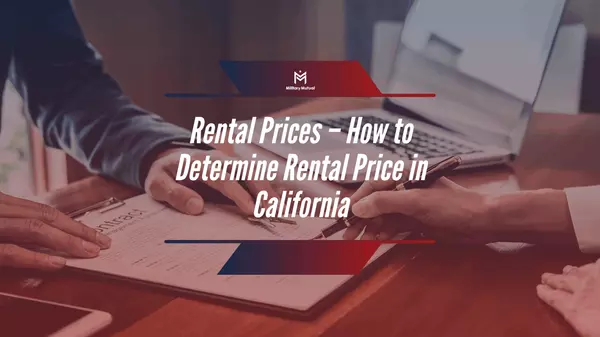Rental Prices – How to Determine Rental Price in California (CA)

💵 Rental Prices – How to Determine Rental Price in California (CA)
Published: July 2025
By Derek Barksdale Founder of Military Mutual.
Setting the right rental price is one of the most important decisions a California landlord can make. Price too high? You’ll face extended vacancies. Too low? You lose profit and undervalue your property. With high demand, rent control regulations, and regional market variations, determining rental prices in California (CA) requires strategy.
Here’s your step-by-step guide to accurately pricing your California rental—with compliance, competition, and cash flow in mind.
📊 1. Research Comparable Rentals (Comps)
Start by looking at what similar properties in your area are renting for.
What to compare:
-
Neighborhood
-
Square footage
-
Number of bedrooms and bathrooms
-
Amenities (parking, pool, laundry, yard)
-
Property condition and upgrades
Tools to use:
-
Zillow Rent Zestimate
-
Rentometer
-
Apartments.com
-
Craigslist and Facebook Marketplace (for local insights)
📍 Stick to a 1–3 mile radius for accurate comparisons.
📍 2. Know Your Local Market Trends
California’s rental market varies city by city—sometimes block by block.
High-demand areas:
-
San Francisco, Los Angeles, San Diego, San Jose
-
Tech hubs (Palo Alto, Irvine)
-
College towns (Berkeley, Davis)
Factors that impact pricing:
-
Walkability
-
Public transportation access
-
School district rankings
-
Proximity to jobs, shopping, and recreation
📈 Monitor seasonal demand—rent often peaks in summer and dips in winter.
⚖️ 3. Understand California’s Rent Control Laws
If your property is subject to AB 1482 (California Tenant Protection Act), you may be limited in how much you can raise rent annually.
AB 1482 basics (as of 2025):
-
5% + CPI (inflation) cap on annual rent increases (not to exceed 10%)
-
Applies to most properties built before January 1, 2010
-
Exemptions include:
-
Single-family homes or condos (if owner is not a corporation and provides proper disclosure)
-
New construction (within the last 15 years)
-
Owner-occupied duplexes
-
⚠️ Also check for local rent control rules in cities like LA, San Francisco, Oakland, Santa Monica, etc.
🧾 4. Factor in Your Expenses
You want to cover all costs and still generate a profit.
Calculate:
-
Mortgage payments
-
Property taxes
-
Insurance
-
HOA dues (if any)
-
Maintenance & repairs
-
Property management fees
-
Vacancy buffer (5–10%)
💡 Use the 1% rule as a baseline: monthly rent = 1% of the property’s value (adjusted for CA markets).
🛠️ 5. Highlight Property Features That Justify Higher Rent
Modern amenities can help your property command a premium.
Rent-boosting features:
-
In-unit washer/dryer
-
Smart home tech (thermostats, locks, lighting)
-
EV charging access
-
Recently renovated kitchen or bathrooms
-
Pet-friendly policies
-
Private outdoor space
🎯 Mention these upgrades in your listing description to justify your price.
📆 6. Consider Timing and Lease Structure
When you list your property matters.
Timing tips:
-
List in late spring or early summer for highest demand
-
Offer flexible move-in dates to widen your tenant pool
-
Consider month-to-month options if you're unsure about long-term pricing trends
📅 Avoid lease expirations during the winter slump.
✅ Final Thoughts: Be Strategic, Stay Compliant
Determining the right rental price in California means balancing market demand, legal limits, and profitability. With proper research and a strategic approach, you can set a rent that attracts great tenants—without leaving money on the table.
Categories
Recent Posts










"My job is to find and attract mastery-based agents to the office, protect the culture, and make sure everyone is happy! "
